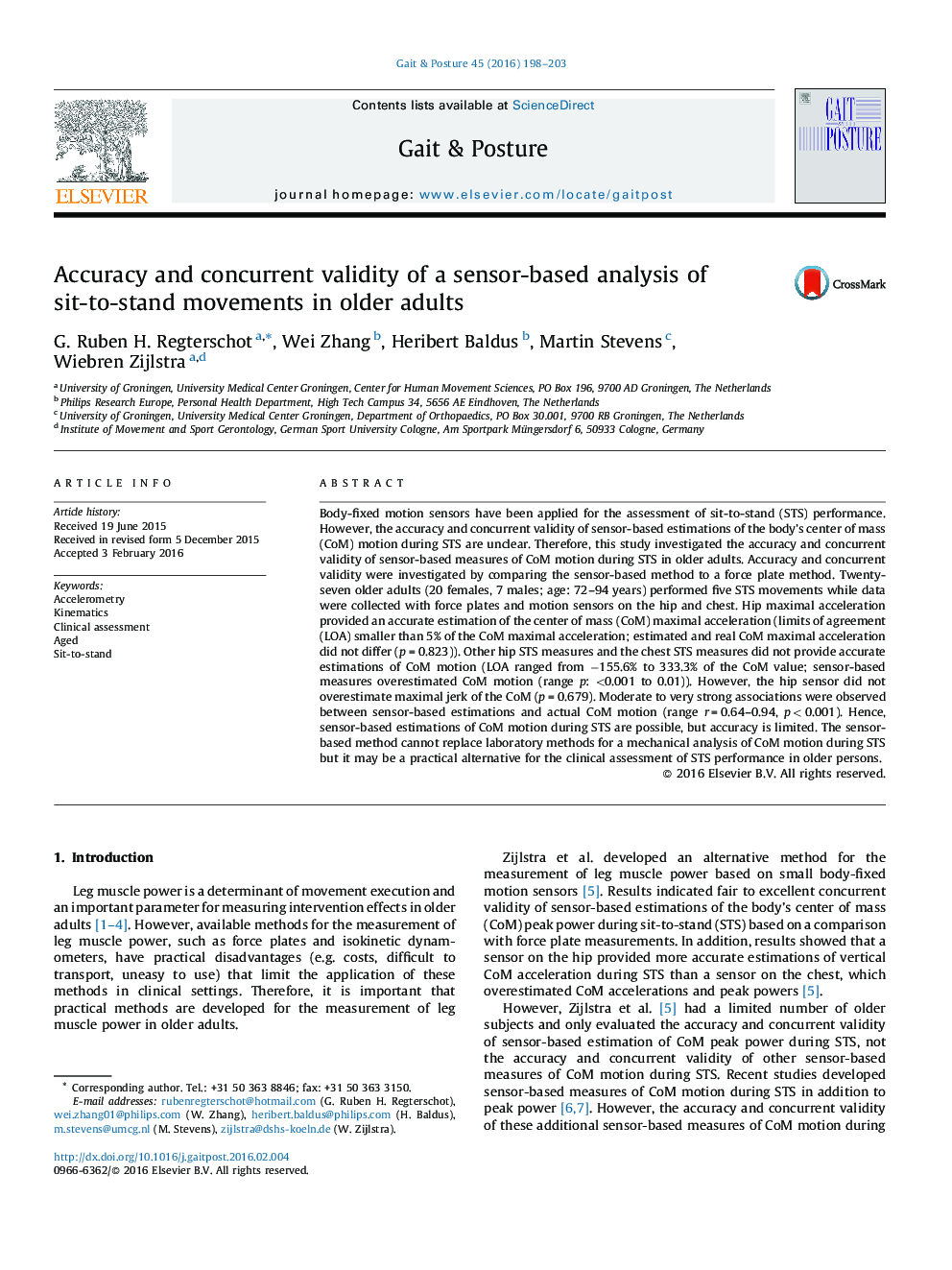| کد مقاله | کد نشریه | سال انتشار | مقاله انگلیسی | نسخه تمام متن |
|---|---|---|---|---|
| 4056005 | 1603850 | 2016 | 6 صفحه PDF | دانلود رایگان |
• We studied the accuracy and concurrent validity of sensor-based sit-to-stand measures.
• In general the accuracy of sensor-based sit-to-stand measures was limited.
• Concurrent validity ranged from moderate to very high.
• The sensor method cannot replace laboratory methods for the analysis of sit-to-stand.
• The sensor-based analysis of sit-to-stand may be relevant for clinical assessments.
Body-fixed motion sensors have been applied for the assessment of sit-to-stand (STS) performance. However, the accuracy and concurrent validity of sensor-based estimations of the body's center of mass (CoM) motion during STS are unclear. Therefore, this study investigated the accuracy and concurrent validity of sensor-based measures of CoM motion during STS in older adults. Accuracy and concurrent validity were investigated by comparing the sensor-based method to a force plate method. Twenty-seven older adults (20 females, 7 males; age: 72–94 years) performed five STS movements while data were collected with force plates and motion sensors on the hip and chest. Hip maximal acceleration provided an accurate estimation of the center of mass (CoM) maximal acceleration (limits of agreement (LOA) smaller than 5% of the CoM maximal acceleration; estimated and real CoM maximal acceleration did not differ (p = 0.823)). Other hip STS measures and the chest STS measures did not provide accurate estimations of CoM motion (LOA ranged from −155.6% to 333.3% of the CoM value; sensor-based measures overestimated CoM motion (range p: <0.001 to 0.01)). However, the hip sensor did not overestimate maximal jerk of the CoM (p = 0.679). Moderate to very strong associations were observed between sensor-based estimations and actual CoM motion (range r = 0.64–0.94, p < 0.001). Hence, sensor-based estimations of CoM motion during STS are possible, but accuracy is limited. The sensor-based method cannot replace laboratory methods for a mechanical analysis of CoM motion during STS but it may be a practical alternative for the clinical assessment of STS performance in older persons.
Journal: Gait & Posture - Volume 45, March 2016, Pages 198–203
